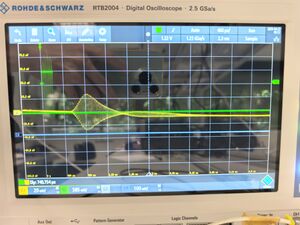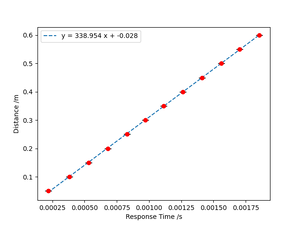Ultrasonic Doppler Speedometer
Objective
(1) Understand the principles of the ultrasonic Doppler effect and its application in speed measurement.
(2) Design and build an ultrasonic Doppler speedometer to measure the velocity of a moving object.
(3) Analyze experimental data and improve measurement accuracy.
Principle
The ultrasonic Doppler effect states that when ultrasonic waves encounter a moving target (such as a small car or fluid), the frequency of the reflected wave shifts. The frequency shift Δf is related to the velocity v of the target as follows:
where c is the speed of sound in air; θ is the angle between the wave propagation direction and the target's motion.
Experimental Instruments and Setup
Introduction to Experimental Apparatus and Principles
Experimental Setup
Methods and Results
Row Data
Digital Filter
Here we use a digital filtering method to eliminate the background sounds. For the ultrasonic experiment, we keep the ultrasonic range of the waveform's frequency spectrum. The filtered waveform is shown as follows,
Measurement of Sound Velocity
We measured waveforms from the detected sensor with various sensor-sensor distances. Considering the time difference between the transmitting sensor's waveform and the detecting sensor's waveform as the response time that the ultrasonic wave spreads this distance, we plotted the response time versus distance curve as follows,
In this plot, we can find the slope in the fitted curve around 338.95 m/s, which is close to the air sound velocity (343 m/s) with an error of around 1.18%.



